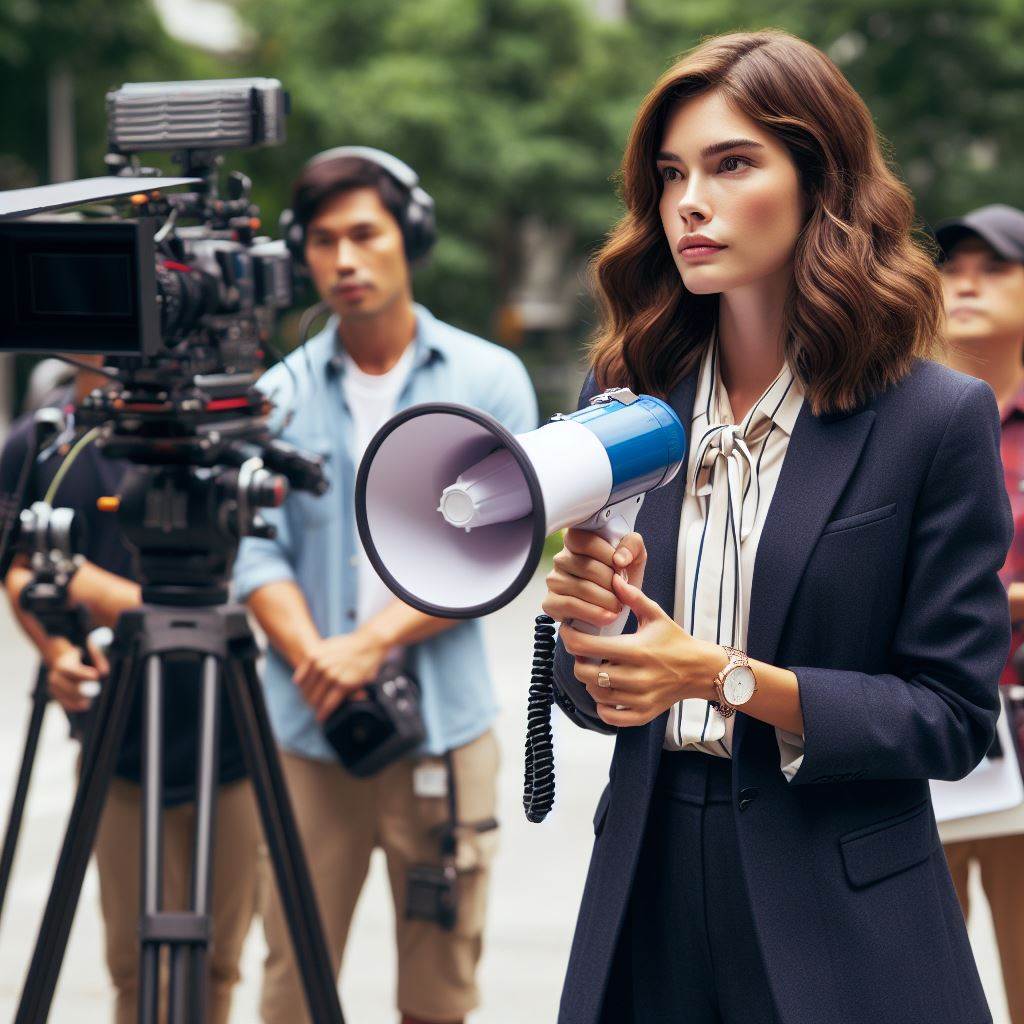Introduction
The significance of the topic (Australian women directors)
The topic of Australian women directors is significant as it sheds light on the changing landscape of the film industry. Currently, women are underrepresented in directorial roles in Australia.
Statistics or background information on the current state of women representation in the directorial roles in Australia
Statistics show that in 2019, only 12% of directors in Australian feature films were women. This stark gender imbalance needs to be addressed to ensure equal opportunities.
The purpose of the blog post and the main points
The purpose of this blog post is to explore the challenges faced by Australian women directors and highlight their achievements. It aims to discuss the need for increased representation and the impact it can have on the industry.
By recognizing the accomplishments of Australian women directors, we can inspire future generations and contribute to the diversification of storytelling.
Furthermore, this blog post will delve into the strategies employed by organizations and individuals to support and promote women directors.
In order to build a more inclusive film industry, it is crucial to examine the barriers faced by women and explore potential solutions.
Overall, this blog section aims to emphasize the importance of Australian women directors in shaping the cinematic landscape and advocating for positive change.
The Challenges Faced by Australian Women Directors
Women directors in the Australian film industry battle obstacles and biases, impeding progress. Underrepresentation and limited opportunities persist, shaping their challenging landscape.
Underrepresentation in Directorial Roles
One of the most prevalent challenges faced by Australian women directors is the severe underrepresentation in directorial roles. The film industry is predominantly male-dominated, with women struggling to secure positions behind the camera.
According to a study conducted by Screen Australia, only 16% of directors in Australian feature films between 1970 and 2020 were women. This significant gender disparity highlights the systemic barriers women face when trying to break into the industry.
Lack of Opportunities Compared to Male Counterparts
Women directors in Australia also confront a dearth of opportunities compared to their male counterparts. The biases that exist within the industry limit their chances of obtaining funding, support, and recognition for their work.
Research shows that male directors are more likely to receive larger budgets and resources for their projects. This disparity in funding directly affects the quality and quantity of work produced by women directors, perpetuating the cycle of underrepresentation.
Specific Challenges Faced by Australian Women Directors
Let’s delve into some specific examples and stories that showcase the challenges faced by Australian women directors.
Margot Nash and the Struggle for Funding
Margot Nash, an acclaimed Australian filmmaker, faced significant challenges in securing funding for her projects. Despite her talent and experience, Nash struggled to receive financial support, leading to delays in production.
Chantelle Murray and the Bias in Script Selection
Chantelle Murray, an aspiring director, faced bias when submitting her scripts for consideration. Despite her unique and compelling storylines, Murray noticed a preference for male-centric narratives, limiting opportunities for alternative perspectives.
Your Personalized Career Strategy
Unlock your potential with tailored career consulting. Get clear, actionable steps designed for your success. Start now!
Get StartedEmma Freeman and the Glass Ceiling
Emma Freeman, a highly respected director, encountered the glass ceiling in her career progression. Despite her critical acclaim and proven track record, Freeman faced challenges in moving from television directing to feature films, a transition that many male directors effortlessly make.
A Call for Change
Addressing the challenges faced by Australian women directors requires a collective effort from the industry and society as a whole. Here are some crucial steps to promote gender equality:
Increased Funding for Women Directors
Allocating more funds and resources specifically for women directors will help bridge the gap in opportunities and support their creative endeavors.
Sensitizing Industry Decision-Makers
Educating and sensitizing key industry players, such as producers and executives, about the biases and obstacles faced by women directors is essential for creating a more inclusive and diverse film industry.
Mentoring and Networking Programs
Establishing mentorship and networking programs that connect aspiring women directors with established professionals can help break barriers, provide guidance, and open doors to new opportunities.
In essence, Australian women directors face numerous challenges and biases within the film industry. The underrepresentation in directorial roles and a lack of opportunities compared to their male counterparts hinder their progress.
It is vital to address these challenges and work towards a more inclusive and diverse industry that embraces the talent and vision of women directors.
Read: Australian Music Awards: A Closer Look
The Achievements and Impact of Australian Women Directors
Australian women directors have been making significant strides in the film industry, challenging traditional norms and paving the way for a more diverse and inclusive cinema landscape.
Notable Australian Women Directors
- Jane Campion – Known for her critically acclaimed films such as “The Piano” and “Bright Star,” Campion became the first female director to win the Palme d’Or at the Cannes Film Festival.
- Gillian Armstrong – A pioneer in Australian cinema, Armstrong directed “My Brilliant Career,” which launched the careers of both Judy Davis and Sam Neill, and helped establish a distinct Australian identity in film.
- PJ Hogan – Famous for directing the box office hit “Muriel’s Wedding,” Hogan showcased the talent of fellow Australian actress Toni Collette and brought a unique blend of comedy and drama to the international stage.
Achievements and Contributions
Australian women directors have made significant contributions to Australian cinema, both in terms of critical acclaim and commercial success.
Jane Campion’s “The Piano” received widespread praise for its storytelling, cinematography, and performances, earning multiple Academy Award nominations and winning three. This success solidified Campion’s status as a groundbreaking director.
Gillian Armstrong’s “My Brilliant Career” not only launched the careers of Davis and Neill but also showcased the rich landscapes of Australia and the struggles of a young woman pursuing her passions in a male-dominated society.
PJ Hogan’s “Muriel’s Wedding” resonated with audiences worldwide, thanks to its heartfelt exploration of female friendship and empowerment. The film’s success proved that Australian stories could hold universal appeal.
Impact on Representation and Diversity
The work of Australian women directors has had a profound impact on representation and diversity in Australian filmmaking.
By telling stories from a female perspective, these directors have brought complex and nuanced female characters to the forefront.
They have challenged the traditional male gaze and provided a platform for women’s voices to be heard.
In addition, Australian women directors have brought attention to stories that might otherwise go untold.
They have explored themes such as indigenous culture, immigration, and LGBTQ+ rights, allowing for a more comprehensive and diverse portrayal of Australian society.
Furthermore, the success of films directed by Australian women has shattered the myth that female-directed films are not commercially viable.
These directors have proven that quality storytelling, regardless of the gender of the director, can resonate with audiences and achieve commercial success.
In fact, Australian women directors have made significant achievements in the film industry and have had a profound impact on Australian cinema.
Their contributions have not only garnered critical acclaim and commercial success but have also increased representation and diversity in storytelling.
With their groundbreaking work, these directors have changed the scene and continue to inspire future generations of filmmakers.
Stand Out with a Resume That Gets Results
Your career is worth more than a generic template. Let us craft a resume and cover letter that showcase your unique strengths and help you secure that dream job.
Get HiredRead: Music Production: A Guide for Aussies
Explore Further: Media Ethics: An Aussie Perspective
Initiatives and Organizations Supporting Australian Women Directors:
Various initiatives and organizations in Australia
There are several initiatives and organizations in Australia that aim to support and promote women in the film industry. These groups provide specific programs, grants, and networking opportunities to help women succeed in their directorial careers.
- Women in Film and Television (WIFT) Australia: WIFT Australia is a national organization that advocates for gender equality in the screen industry. They offer mentoring programs, workshops, and networking events for women directors.
- Screen Australia: Screen Australia is the Australian government’s major funding body for the film and television industry. They have a Gender Matters initiative that aims to address the gender imbalance in the industry and provide funding for female-driven projects.
- Women in Screen (WIS): WIS is a not-for-profit organization that supports women in the Australian screen industry. They offer development programs, funding opportunities, and networking events to help women advance their careers.
- Women in Film and Television New South Wales (WIFT NSW): WIFT NSW is an organization focused on advancing women’s careers in the screen industry. They provide grants, workshops, and networking opportunities for women directors.
Examples of successful projects or collaborations
These organizations have contributed to the success of numerous projects and collaborations led by Australian women directors. Some notable examples include:
- The Babadook (2014): Directed by Jennifer Kent, this psychological horror film gained critical acclaim and was a commercial success.
- Sweet Country (2017): Directed by Warwick Thornton, this film won several awards and was praised for its powerful storytelling.
- The Dressmaker (2015): Directed by Jocelyn Moorhouse, this Australian comedy-drama received multiple nominations and awards.
- Samson and Delilah (2009): Directed by Warwick Thornton, this film won the Caméra d’Or at the Cannes Film Festival.
These projects showcase the talent and creativity of Australian women directors, highlighting the impact of the initiatives and organizations that support their work.
Through the programs, grants, and networking opportunities provided by these organizations, more Australian women directors are gaining recognition and creating influential and successful films.
The industry is gradually becoming more inclusive and diverse, thanks to the efforts of these dedicated initiatives.
It is important to continue supporting and promoting women in the film industry, as their perspectives and voices bring unique contributions to the field. By acknowledging and addressing the gender imbalance, Australia can foster a more equitable and thriving film industry for everyone.
Read: How to Network in Australia’s Music Scene

Recent Developments and Future Outlook
In recent years, the representation of women directors in Australia has been undergoing positive changes, fostering new opportunities and promoting gender equity in the industry.
This progress can be attributed to a combination of government policies, industry initiatives, and the continued support and advocacy for women directors.
Positive Trends and Changes
- Increased Representation: The Australian film industry has witnessed a gradual increase in the representation of women directors over the past decade.
- Breaking Stereotypes: Women directors are challenging traditional gender roles and stereotypes by helming diverse projects that cater to a wide range of audiences.
- Award Recognition: Outstanding works by Australian women directors, such as Jane Campion and Cate Shortland, have received international acclaim and prestigious awards.
- Improved Visibility: Women directors are gaining more visibility in the media, and their unique perspectives and storytelling styles are being recognized as valuable contributions to the industry.
Government Policies and Industry Initiatives
- Funding Support: The Australian government has implemented policies that provide financial incentives and funding programs specifically targeted towards women directors.
- Gender Equality Targets: Various industry bodies, film festivals, and production companies have set targets to ensure a balanced representation of women directors in their projects.
- Mentorship Programs: Initiatives offering mentorship and networking opportunities have emerged, enabling aspiring women directors to learn from experienced professionals.
- Training Programs: Industry-wide training programs have been introduced to equip women directors with the necessary skills and knowledge to thrive in the competitive landscape.
New Opportunities and Future Prospects
The future for Australian women directors looks promising, with several emerging opportunities and a supportive environment. Some potential prospects include:
- Inclusive Storytelling: Women directors bring fresh perspectives and narratives that resonate with diverse audiences, expanding the storytelling landscape in Australia.
- Critical Acclaim: As more female directors create groundbreaking works, the industry is witnessing an increase in critically acclaimed films that challenge societal norms.
- Representation of Women’s Voices: Australian female directors continue to champion stories that highlight women’s experiences, contributing to greater representation and empowerment.
- International Collaborations: Women directors from Australia are increasingly collaborating with international production companies, securing opportunities for global exposure.
The Importance of Support and Advocacy:
Continued support and advocacy are pivotal for sustaining the progress made by Australian female directors. It is essential to:
- Invest in Funding: Governments and industry bodies must continue to invest in funding programs specific to female directors, ensuring equal access to resources.
- Promote Visibility: Platforms, festivals, and media outlets should actively promote and amplify the works of female directors to improve visibility and recognition.
- Address Bias: Efforts should be made to address unconscious bias within the industry and promote inclusive hiring practices to create equal opportunities for female directors.
- Provide Mentorship and Training: Mentorship programs and training initiatives should be expanded to support the professional development of women directors at all career stages.
In short, the Australian film industry is experiencing positive changes and an increasing representation of female directors.
With the implementation of government policies, industry initiatives, and continued support, the future prospects for Australian female directors look promising.
It is crucial to nurture and advocate for their talent to ensure a diverse and inclusive industry landscape that amplifies women’s voices and experiences.
Read: The Evolution of Australian Music Genres
Gain More Insights: Animation in Australia: Industry Insights
Transform Your LinkedIn for Maximum Impact
Elevate your professional brand with a LinkedIn profile that attracts recruiters, showcases your expertise, and maximizes opportunities. Stand out in your industry with a profile built for success.
Boost ProfileGain More Insights: Grants and Funding for Aussie Musicians
Conclusion
In closing, Australian female directors are making significant strides in the film industry, challenging stereotypes and bringing fresh perspectives to the screen.
By increasing their representation, we can create a more inclusive and diverse industry that better reflects our society.
Audiences must actively support and engage with Australian female directors, fostering more opportunities and diverse storytelling experiences.
So, the next time you’re browsing for a film or TV series to watch, consider seeking out projects directed by Australian women and show your support.
Together, we can continue to change the scene and empower these talented directors.
What stories will they tell next, and how will their unique perspectives shape the future of Australian cinema?




